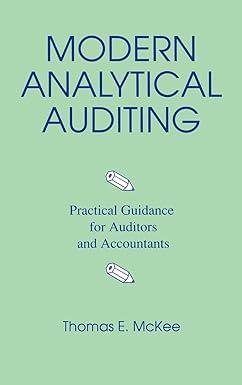Question
John and Sandy Ferguson got married eight years ago and have a seven-year-old daughter, Samantha. In 2018, John worked as a computer technician at a
John and Sandy Ferguson got married eight years ago and have a seven-year-old daughter, Samantha. In 2018, John worked as a computer technician at a local university earning a salary of $152,000, and Sandy worked part-time as a receptionist for a law firm earning a salary of $29,000. John also does some Web design work on the side and reported revenues of $4,000 and associated expenses of $750. The Fergusons received $800 in qualified dividends and a $200 refund of their state income taxes. The Fergusons always itemize their deductions and their itemized deductions were well over the standard deduction amount last year. The Fergusons had qualifying insurance for purposes of the Affordable Care Act (ACA). Use Exhibit 8-9, Tax Rate Schedule, Dividends and Capital Gains Tax Rates for reference.
The Fergusons reported making the following payments during the year:
- State income taxes of $4,400. Federal tax withholding of $21,000.
- Alimony payments to Johns former wife of $10,000 (divorced in 2014).
- Child support payments for Johns child with his former wife of $4,100.
- $12,200 of real property taxes.
- Sandy was reimbursed $600 for employee business expenses she incurred. She was required to provide documentation for her expenses to her employer.
- $3,600 to Kid Care day care center for Samanthas care while John and Sandy worked.
- $14,000 interest on their home mortgage ($400,000 acquisition debt).
- $3,000 interest on a $40,000 home-equity loan. They used the loan to pay for a family vacation and new car.
- $15,000 cash charitable contributions to qualified charities.
- Donation of used furniture to Goodwill. The furniture had a fair market value of $400 and cost $2,000.

Tax Rates for Net Capital Gains and Qualified Dividends
| Rate* | Taxable Income | ||||
|---|---|---|---|---|---|
| Married Filing Jointly | Married Filing Separately | Single | Head of Household | Trusts and Estates | |
| 0% | $0 - $77,200 | $0 - $38,600 | $0 - $38,600 | $0 - $51,700 | $0 - $2,600 |
| 15% | $77,201 - $479,000 | $38,601 - $239,500 | $38,601 - $425,800 | $51,701 - $452,400 | $2,601 - $12,700 |
| 20% | $479,000+ | $239,500+ | $425,801+ | $452,401+ | $12,701+ |
*This rate applies to the net capital gains and qualified dividends that fall within the range of taxable income specified in the table (net capital gains and qualified dividends are included in taxable income last for this purpose).
2018 Tax Rate Schedules
Individuals
Schedule X-Single
| If taxable income is over: | But not over: | The tax is: |
|---|---|---|
| $ 0 | $ 9,525 | 10% of taxable income |
| $ 9,525 | $ 38,700 | $952.50 plus 12% of the excess over $9,525 |
| $ 38,700 | $ 82,500 | $4,453.50 plus 22% of the excess over $38,700 |
| $ 82,500 | $157,500 | $14,089.50 plus 24% of the excess over $82,500 |
| $157,500 | $200,000 | $32,089.50 plus 32% of the excess over $157,500 |
| $200,000 | $500,000 | $45,689.50 plus 35% of the excess over $200,000 |
| $500,000 | $150,689.50 plus 37% of the excess over $500,000 |
Schedule Y-1-Married Filing Jointly or Qualifying Widow(er)
| If taxable income is over: | But not over: | The tax is: |
|---|---|---|
| $ 0 | $ 19,050 | 10% of taxable income |
| $ 19,050 | $ 77,400 | $1,905 plus 12% of the excess over $19,050 |
| $ 77,400 | $165,000 | $8,907 plus 22% of the excess over $77,400 |
| $165,000 | $315,000 | $28,179 plus 24% of the excess over $165,000 |
| $315,000 | $400,000 | $64,179 plus 32% of the excess over $315,000 |
| $400,000 | $600,000 | $91,379 plus 35% of the excess over $400,000 |
| $600,000 | $161,379 plus 37% of the excess over $600,000 |
Schedule Z-Head of Household
| If taxable income is over: | But not over: | The tax is: |
|---|---|---|
| $ 0 | $ 13,600 | 10% of taxable income |
| $ 13,600 | $ 51,800 | $1,360 plus 12% of the excess over $13,600 |
| $ 51,800 | $ 82,500 | $5,944 plus 22% of the excess over $51,800 |
| $ 82,500 | $157,500 | $12,698 plus 24% of the excess over $82,500 |
| $157,500 | $200,000 | $30,698 plus 32% of the excess over $157,500 |
| $200,000 | $500,000 | $44,298 plus 35% of the excess over $200,000 |
| $500,000 | $149,298 plus 37% of the excess over $500,000 |
Schedule Y-2-Married Filing Separately
| If taxable income is over: | But not over: | The tax is: |
|---|---|---|
| $ 0 | $ 9,525 | 10% of taxable income |
| $ 9,525 | $ 38,700 | $952.50 plus 12% of the excess over $9,525 |
| $ 38,700 | $ 82,500 | $4,453.50 plus 22% of the excess over $38,700 |
| $ 82,500 | $157,500 | $14,089.50 plus 24% of the excess over $82,500 |
| $157,500 | $200,000 | $32,089.50 plus 32% of the excess over $157,500 |
| $200,000 | $300,000 | $45,689.50 plus 35% of the excess over $200,000 |
| $300,000 | $80,689.50 plus 37% of the excess over $300,000 |
Step by Step Solution
There are 3 Steps involved in it
Step: 1

Get Instant Access to Expert-Tailored Solutions
See step-by-step solutions with expert insights and AI powered tools for academic success
Step: 2

Step: 3

Ace Your Homework with AI
Get the answers you need in no time with our AI-driven, step-by-step assistance
Get Started


